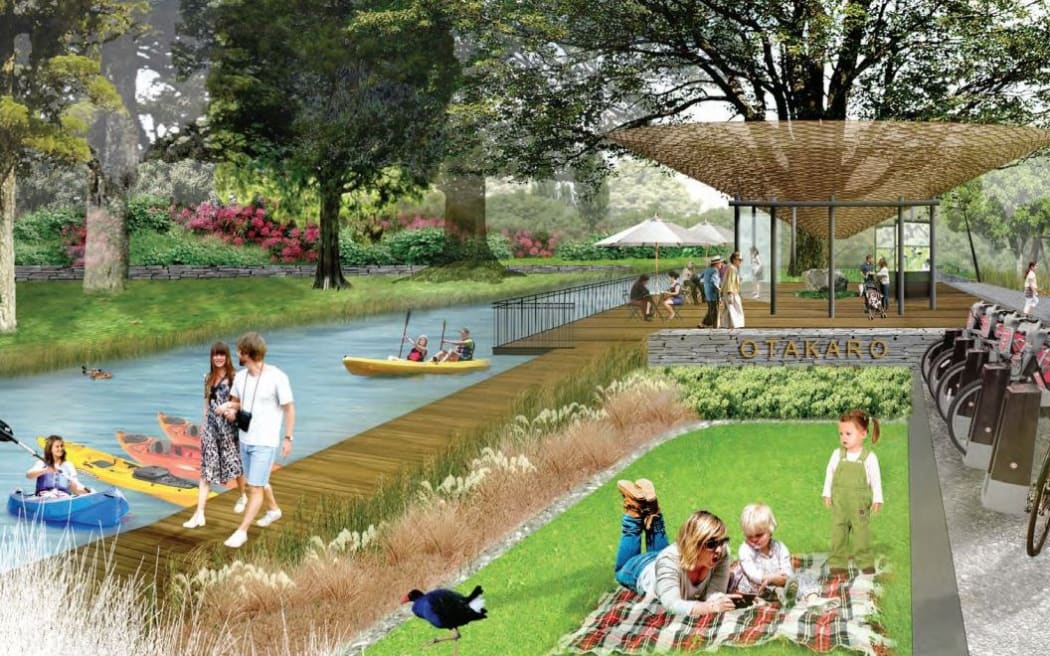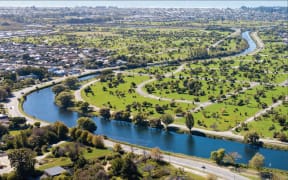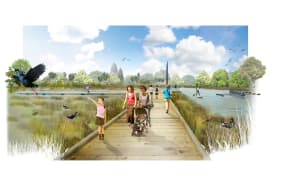A major part of a plan to restore Christchurch's red zone has taken two years and $5 million to draw up but is now being blasted as "unachievable, unviable" and "undesirable".

Artist's impressions of the regeneration of the Ōtākaro Avon River Corridor in the Christchurch red zone. Photo: Regenerate Christchurch
The document has been created by the government's rebuild agency Regenerate Christchurch and is supposed to guide a $40 million project to green the rubble of neighbourhoods abandoned after the quakes.
The scathing criticisms of Regenerate and its Ōtākaro Avon River Corridor Regeneration Plan were laid out in a report by city council staff.
They focused on a proposal that was supposed to guide the planting of 150,000 trees, and were deeply unhappy there had been little consultation with ecologists.
The report said this meant a number of the suggestions were likely to be "either unachievable, unviable in the medium to long term or worse, undesirable."
Council ecologists had to carry out their own rapid assessments of what trees should be planted and where they should go.
City councillor, Yani Johanson, said the criticisms were disappointing but not surprising.
"It's really hard to understand basically why, as a council who's done these sorts of projects for, you know, over 100 years, why you need all these agencies coming in to town being set up from Wellington, just telling us what to do or what they want to do when we could actually utilise local expertise and get these things done, probably at a fraction of the price."
The setting up of Regenerate had led to money being wasted and rebuild projects taking much longer than they should have, he said.
"This isn't an uncommon thing, which is quite sad really, but it was exactly the thing that I tried to warn the select committee about when they set up Regenerate, is that we didn't need more layers of red tape and possible duplication."
One of the city's leading urban ecologists, Dr Colin Meurk, concurs with the report's criticisms of Regenerate.
"There's been a huge sort of talk feast. But strangely, they seem to have left out of the equation, some critical input and certainly in the post earthquake period, you know, where there's a lot of NGOs who have been actively practising all sorts of methods of regeneration and planting."
Right in the middle of the city, 600-hectares of wilderness represented a huge opportunity and it would be a shame if it was squandered, he said.
"They talk about the halo effect of not only wildlife spreading out from sanctuary environments, but there's also the halo effect of the social and emotional interaction that people have in that landscape and with that wildlife."
No one at the council was willing to be interviewed.
In two line statement, one of the city managers, David Griffiths, appeared to back-track on the criticisms in the staff report, saying Regenerate had done everything that it was required to do.
"The regeneration plan was developed and provides for broad land uses and the implementation process will further refine these," he said.
Regenerate boss, Ivan Iafeta also declined to be interviewed saying he wanted to address the matter directly with council rather than through the media.
He noted senior ecologists, including some from the council, had been consulted and that the first Regenerate was aware of concerns was when they saw the business case posted on the council's website.




